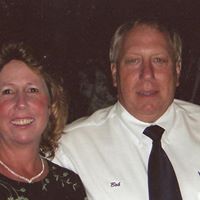Robert A Sauer
age ~73
from Rochester, MN
- Also known as:
-
- Bob A Sauer
- Rob A Sauer
- Bobby Sauer
- Roberta Sauer
- Robert Sallen
- Allen S Robert
- Phone and address:
-
4422 Surrey Ln NW, Rochester, MN 55901
5072887949
Robert Sauer Phones & Addresses
- 4422 Surrey Ln NW, Rochester, MN 55901 • 5072887949
- Harmony, MN
- Tallmadge, OH
Work
-
Company:Food equipment food manu corp
-
Address:22201 Aurora Rd, Cleveland, OH 44146
-
Phones:2166630244
-
Position:Ceo
-
Industries:Business Services
Specialities
Appellate Practice
Lawyers & Attorneys

Robert Sauer - Lawyer
view sourceSpecialties:
Appellate Practice
ISLN:
904030998
Admitted:
1988
University:
University of Notre Dame, B.A., 1973
Law School:
Pace University, J.D., 1987
Us Patents
-
Rotary Head Tray Dropper
view source -
US Patent:44416300, Apr 10, 1984
-
Filed:Apr 28, 1981
-
Appl. No.:6/258416
-
Inventors:Robert L. Sauer - Maple Heights OH
-
International Classification:B65G 5906
-
US Classification:221297
-
Abstract:A gravity feed rotary head tray dropper is provided which may be universally adjusted for different tray sizes, shapes and lip thicknesses. The device includes a rotatable blade to separate the bottom tray from a stack of trays and a rotatable tray support disc to hold the stack of trays in position between tray separations. The rotatable tray support disc is positioned beneath the rotatable blade and is vertically adjustable to accommodate tray lips of varying thicknesses.
-
Cutting Machine For Slicing Circular Articles Into Wedges
view source -
US Patent:45548528, Nov 26, 1985
-
Filed:Jul 26, 1983
-
Appl. No.:6/517467
-
Inventors:Robert L. Sauer - Hudson OH
Charles G. Morrissette - Shaker Heights OH
Stanley J. Garbaczik - Maple Heights OH -
Assignee:Food Equipment Manufacturing Corporation - Maple Heights OH
-
International Classification:B26D 324
-
US Classification:83407
-
Abstract:A machine for dividing articles into wedge-shaped portions which includes a conveyor for transporting the articles along a processing path and a series of cutting stations spaced along the path. Individual article carriers, each supported on the conveyor for rotation about an axis perpendicular to the processing path, carry the articles through successive cutting stations. The carriers and associated articles are rotationally indexed between cutting stations by cam surfaces disposed along the processing path to cause the articles to be cut at the cutting stations on angularly displaced lines. The cutting stations include a rotary blade that is power-driven at a speed that approximates the speed of the conveyor to eliminate article handling problems as well as fouling of the apparatus and articles.
-
Flowable Product Metering And Dispensing Machine
view source -
US Patent:43985777, Aug 16, 1983
-
Filed:Aug 28, 1980
-
Appl. No.:6/182143
-
Inventors:Robert L. Sauer - Maple Heights OH
-
International Classification:B65B 304
-
US Classification:141135
-
Abstract:A machine is provided which accurately measures and dispenses predetermined quantities of flowable products through an orbiting dispenser into conveyorized containers moving therebeneath. Orbital movement of the dispenser is synchronized with the linear speed of the conveyor so as to begin dispensing a product into a container as the dispenser approaches the lower portion of its cycle. The dispenser is programmed to delay closing for a period of time sufficient to permit substantially all of the product to flow therefrom and to be received into the container. Thereafter, pistons are provided to sweep out product residue from the interior of the dispenser and then to remove by a pulse of air any product residue still clinging to the bottom of the dispenser.
Name / Title
Company / Classification
Phones & Addresses
CEO
Food Equipment Food Manu Corp
Business Services
Business Services
22201 Aurora Rd, Cleveland, OH 44146
Website: femc.com
Website: femc.com
Chief Executive Officer President
Food Equipment Manufacturing Corporation
Packaging Machinery
Packaging Machinery
22201 Aurora Rd, Cleveland, OH 44146
Chief Executive Officer
Food Equipment Food Manu Corp
Business Services
Business Services
22201 Aurora Rd, Cleveland, OH 44146
Owner
Rochester Drain Rite
Mfg Polish/Sanitation Goods · Repair Services
Mfg Polish/Sanitation Goods · Repair Services
606 11 Ave NW, Rochester, MN 55901
PO Box 6380, Rochester, MN 55903
5072882121
PO Box 6380, Rochester, MN 55903
5072882121
CEO
Food Equipment Food Manu Corporation
Packaging & Labeling Svcs
Packaging & Labeling Svcs
22201 Aurora Rd, Cleveland, OH 44146
2166631208, 2166639337, 2166630244
2166631208, 2166639337, 2166630244
Chief Executive Officer President
Food Equipment Manufacturing Corporation
Mfg Packaging Machinery
Mfg Packaging Machinery
22201 Aurora Rd, Cleveland, OH 44146
2166631208, 2166639337
2166631208, 2166639337
Robert Sauer MD
Emergency Medicine · Family Doctor
Emergency Medicine · Family Doctor
PO Box 348, Preston, MN 55965
CertaPro Painters of Strongsville
Drywall · Handyman Service · Interior Designers · House Painters · Interior Painters · Pressure Washing · Wallpaper Removal · Wallpaper
Drywall · Handyman Service · Interior Designers · House Painters · Interior Painters · Pressure Washing · Wallpaper Removal · Wallpaper
13500 Pearl Rd St 139 #341, Strongsville, OH 44136
4402105600
4402105600
Resumes

Robert W Sauer
view sourceWork:
Us Department of Health and Human Services
Other
Other
Skills:
Microsoft Excel
Microsoft Office
Customer Service
Powerpoint
Microsoft Office
Customer Service
Powerpoint

Assistant Director
view sourceIndustry:
Utilities
Work:
Buchanan County Public Service Authority since Sep 1984
Assistant Director
Assistant Director
Skills:
Customer Service
Leadership
Public Speaking
Research
Training
Budgets
Powerpoint
Leadership
Public Speaking
Research
Training
Budgets
Powerpoint

Robert Sauer
view sourceMedicine Doctors

Robert Lee Sauer
view sourceSpecialties:
Emergency Medicine
Family Medicine
Family Medicine
Education:
University of Iowa (1963)
Isbn (Books And Publications)





Robert Sauer
view source
Robert Sauer
view source
Robert Sauer
view source
Robert Sauer
view source
Robert Sauer
view source
Robert Sauer
view source
Robert Sauer
view source
Robert Sauer
view sourceYoutube
Plaxo

robert sauer
view sourcewormsGermany

Robert Sauer
view sourceDuPont
Classmates

Robert Sauer
view sourceSchools:
Shortridge High School Indianapolis IN 1955-1959
Community:
Ted Levee, Mark Leavell, Darlene Barnett

Robert Sauer
view sourceSchools:
Brielle Elementary School Brielle NJ 1996-2000
Community:
Sheila Clarendon, Joanna Britt, John Lakin, Ronald Treharne

Robert Sauer
view sourceSchools:
Port Washington High School Port Washington WI 1959-1963
Community:
Mark Dornacker

Robert Sauer
view sourceSchools:
Swift Creek Junior High Shcool Chesterfield VA 1990-1991, Bailey Bridge Middle School Midlothian VA 1991-1992
Community:
Randy Zell, Maureen Edwards, John Blakeslee

Robert Sauer
view sourceSchools:
Wilson Christian Academy West Mifflin PA 1980-1984

Robert Sauer
view sourceSchools:
Tuckahoe High School Eastchester NY 1965-1969
Community:
Patricia Johnston, Mary Kiernan

Robert Sauer
view sourceSchools:
Fosdick-Masten Park High School Buffalo NY 1948-1952
Community:
Eugenia Mudrenko, Nancy Okun, Robert Marcott, John Hokamp

Robert Sauer
view sourceSchools:
Bayard High School Bayard NE 1958-1962
Community:
Sam Ebel, Sandra Chapman, Virginia Fries, Janet Rogers, Gary Kniss, Carol Garcia, Attie Nelson, John Segura, Cheryl Hight, Joleen Betz, Jim Goss
Myspace
Flickr
Googleplus

Robert Sauer
About:
Professor of Economics at Royal Holloway, University of London and President of Jerusalem Institute for Market Studies

Robert Sauer
Tagline:
Manager and Consultant to the Automotive Industry, specialized in Quality Management, Project Management, Launch Management, Logistic Management, Process Management

Robert Sauer

Robert Sauer

Robert Sauer

Robert Sauer

Robert Sauer

Robert Sauer
Get Report for Robert A Sauer from Rochester, MN, age ~73

















